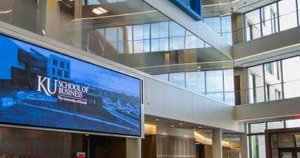Just as companies are slowly realizing with increased regularity that they are defined and supported by their employees, colleges and universities are realizing that they depend enormously on their students to create, proliferate, and solidify the school’s brand and culture. Therefore, schools need to make sure that their campuses make use of the technologies that current and future students expect and rely upon. For this generation of students, the first born and raised fully in the era of networked digital communication, that means incorporating digital features that mesh with their value systems. Studies have shown that the generation of students currently coming of age values experiences more than commodities, and prioritizes the importance of communal collaboration. To them, owning things matters less than doing things, particularly when those activities can be enjoyed with others. This value system has contributed immensely to the growth of the sharing economy, and its impact has carried over into the ascendancy of the digital display industry within the higher education space as well. Schools obviously need to communicate with their students, and they also need their students to communicate with each other. Large-format LED displays are uniquely capable of accomplishing both of these tasks simultaneously in a way that fits appropriately within the digital backdrop young people have grown up surrounded by.
An example of a higher education institution that has brilliantly incorporated large-format LED into their space to cultivate collaboration and inspire creativity can be found in Lawrence, Kansas. This college town is home to the University of Kansas and more specifically to Capitol Federal Hall, the primary HQ for KU’s graduate school of business. When originally designing the building a few years ago, the administration pictured a well-lit space filled with open areas where students, faculty, and visitors could freely gather, interact, and move about. To organically generate this kind of spontaneous networking however, the building needed a focal point to draw everyone’s attention even when the area was flooded with natural light. The university found their centerpiece in the form of two large-format LED displays, both strategically placed around a centrally located coffee bar in the building’s airy atrium.
These displays are precisely the kind of digital technology today’s students expect from their schools. The displays are both sleek and smart, and are a source of constant content for students in need of weather updates, special event schedules, and other related campus news. Beyond its utility as a communicative tool for the administration, the display has transformed the entire dynamic of the environment around it. It’s not just a screen to see things on, and it has made Capitol Federal Hall a location to meet, share, and experience collectively. In short, it’s exactly what this generation of students wants.
[bctt tweet=”To succeed, schools need to ‘keep up with the kids’ and make sure their campuses are using the technologies that students expect and rely upon. Key to this the ascendancy of the digital display industry within higher education, featuring tech young people have grown up surrounded by.” username=”nanolumens”]
Another school that has integrated large-format LED technology in a similar way is Arizona State University, which revitalized its Beus Center of Law and Society with a massive indoor display. This display was designed to live indoors but project its content out through the giant glass windows of the building so students could still enjoy its impact outside. The display’s colorful dynamism has turned the exterior of the Beus Center into a lively gallery where students of all academic disciplines gather to socialize and interact. The integration of this display was such a success that its executors were awarded the 2017 Commercial INTEGRATOR Integration Award for Best Higher Education Project.
The fundamental challenges that schools face today have not changed from the demands they’ve faced in the past. Schools still need to communicate with their students, and they still need to create environments for students to communicate with each other. It’s not the problems that have changed; it’s the solutions. Institutions of higher education need to approach these age-old objectives in new ways with new technologies because they are currently faced with a new generation of students. There was a time where the blackboard was the primary means of messaging between an administration and its student body, but that day is now long gone, overtaken by the era of digital communication. If schools expect their students to become leaders when they leave campus, the administration needs to set an example of how that’s done. Integrating large-format LED technology into higher education spaces shows to today’s students that their needs and expectations are taken into account. It shows them that their learning experience matters to the school, and that’s really the best way to get students to care about their education: prove that their education matters to the educators, too. To find out more about our work in the higher education space, you can find a wide selection of content on the subject here.

